Western Australia’s war on sharks won’t make swimmers any safer
Seven people in three years. That’s how many people have died off the coast of Western Australia after being mauled by sharks, most of them the fearsome great white. That’s earned the region the nickname “the shark attack capital” of the world.
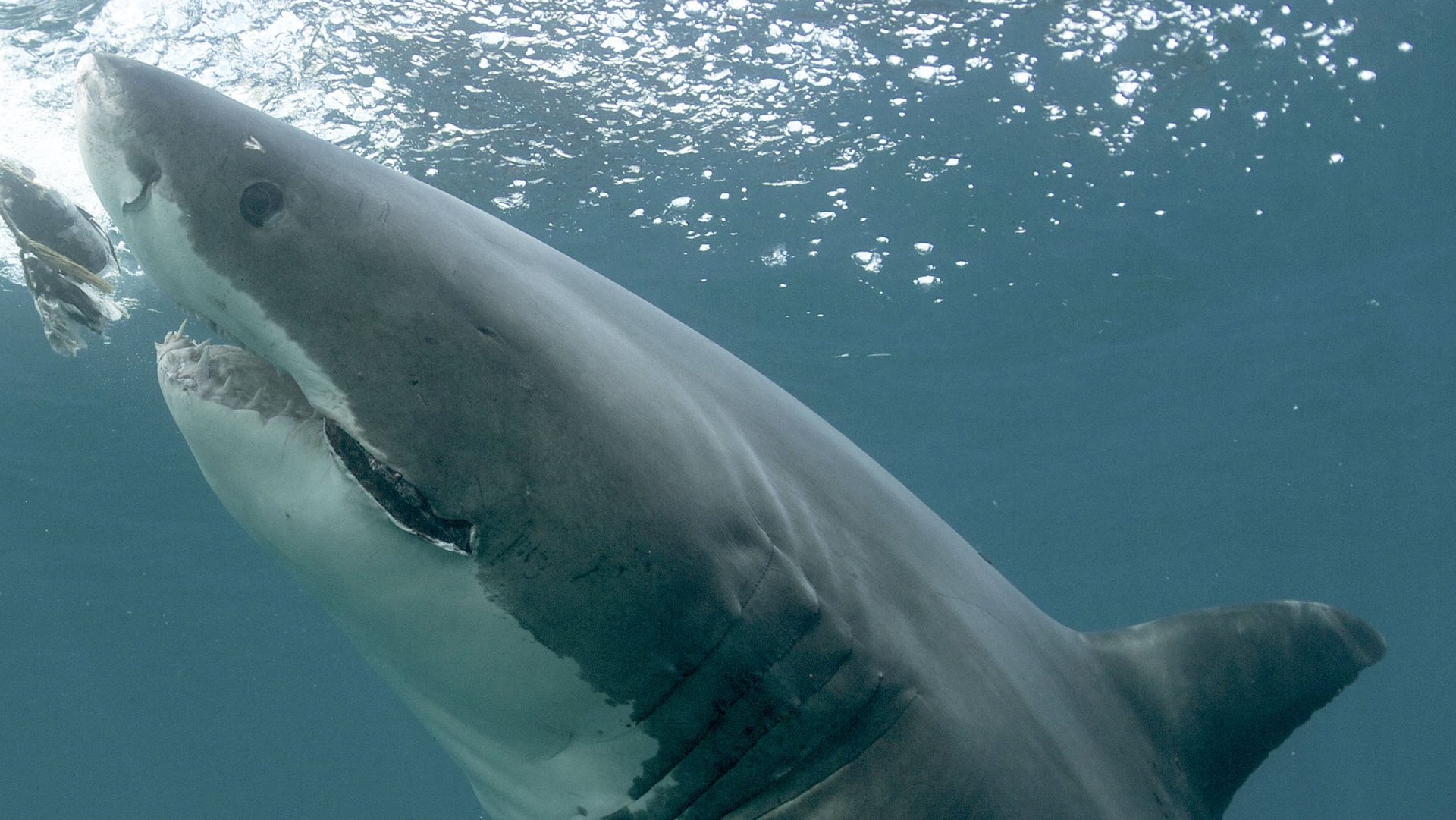

Seven people in three years. That’s how many people have died off the coast of Western Australia after being mauled by sharks, most of them the fearsome great white. That’s earned the region the nickname “the shark attack capital” of the world.
The Western Australian government is gearing up to change that. Though it already monitors the presence of big sharks in the area (the tweet above is an example), the public and small business owners are getting jittery. That’s why, starting this month, it is setting up 72 drumlines—large baited hooks suspended from an inflated buoy—one kilometer (0.62 miles) off its beaches. It is authorizing commercial fishermen to kill any sharks longer than three meters (10 feet) still alive after having been snagged by the drumlines, as well as any that seem to be posing a threat to swimmers. The “target” species: great white, tiger and bull sharks.
To many, this sounds like overkill—literally. But two other Australian states, Queensland and New South Wales, do essentially the same thing, using “shark nets” in addition to or in place of drumlines—as does a program in South Africa (Western Australia isn’t able to use nets because its beaches aren’t suited to them). Many assume shark nets work by preventing sharks from entering swimming areas. That’s a misconception, though. They’re explicitly not designed to “create an impenetrable barrier against shark attack,” as Queensland’s government explains on its website. Like drumlines, the primary goal of shark nets is to ”reduce the number of potentially dangerous sharks” around popular beaches.
By making them unable to move enough to breathe, both nets and drumlines almost always kill any sharks who become ensnared. But despite the decades-long history of Queensland’s and NSW’s shark control programs, it’s not clear that the logic behind them—kill big sharks, stop the attacks—actually works.

Kill sharks, save people?
On the face of it, though, they seem highly successful. Since it instituted its net-and-drumline program in 1962, Queensland, on Australia’s northeast coast, has seen only a single fatal attack. New South Wales, the birthplace of the shark net, also claims its program is “effective.” This is used to justify the tremendous expense of the programs, both in terms of budget—the New South Wales and Queensland programs cost, respectively, in the region of A$900,000 (US$810,000) and A$1.7 million a year, according to the most recent available data—and their ecological toll. Nets in particular catch and kill many times more animals than they do the “target” species:
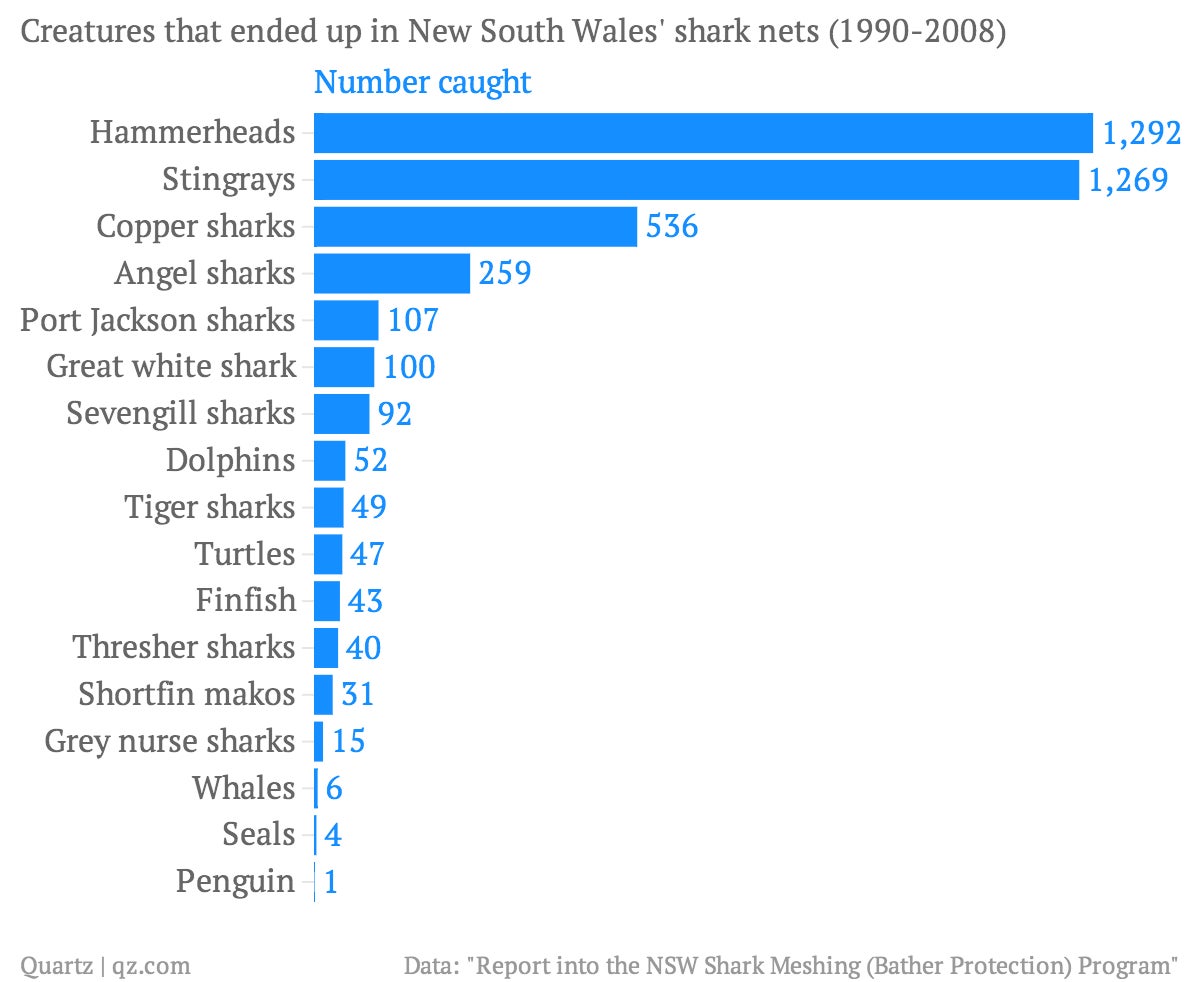
These claims of success are based on the causal linking of two phenomena: a) nets and drumlines kill thousands of big sharks each year; and b) attacks are extremely infrequent.
But when you compare the rate of shark attacks pre- and post-meshing, the link becomes blurrier than it might seem. While there were 36 attacks before nets were installed, 24 still occurred (pdf, p.35) at these same beaches after they went up (the chart below compares pre- and post-net attack incidence by region).

This is happening perhaps because a lot of big sharks aren’t being killed—or at least, not until after they pass into protected waters. Netting usually either stops four meters or so shy of the surface to allow boats to pass, like this…
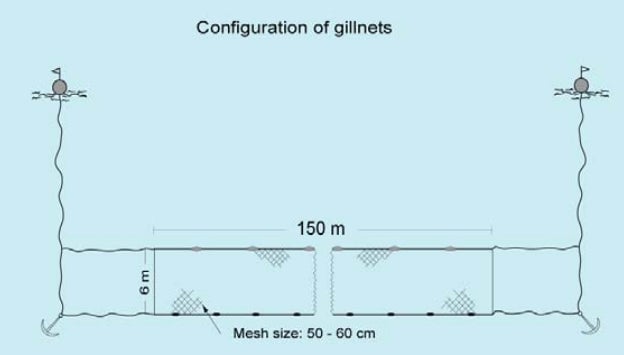
…or is rigged with gap between the bottom of the net and the seabed, like this:
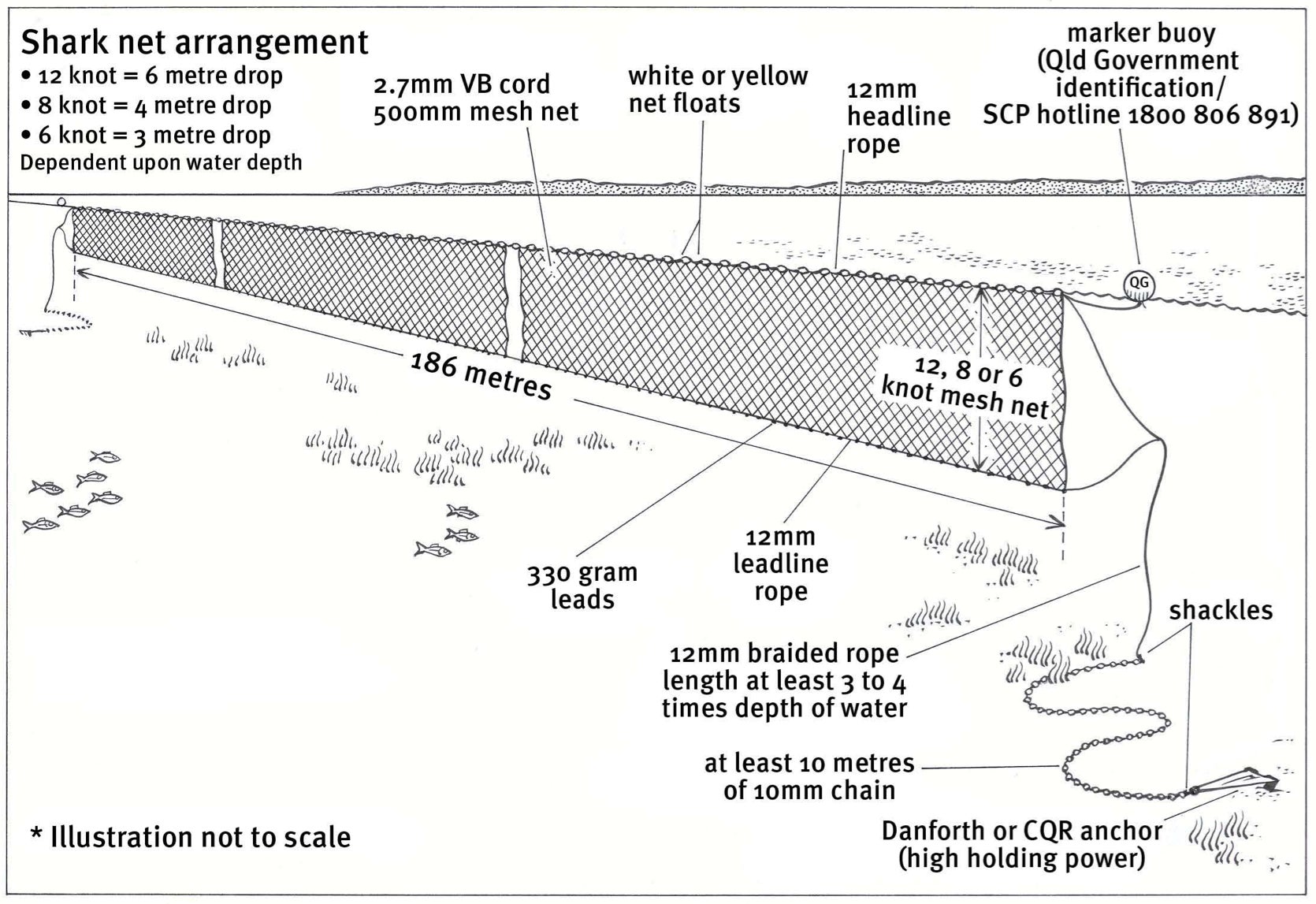
That means sharks can swim over, under or—because nets are of limited length—around. And they definitely do; around 40% of sharks ensnared in safety nets turn up on the beach side of the net (pdf). That means way more sharks are roaming around between the net and the beach than are actually attacking anyone.
There are problems with drumlines too. These snare only sharks that end up going for the bait. If a shark has recently eaten, the bait might not tempt it. Or there may be no bait: One Queensland study found dolphins stealing the bait within 90 seconds of its being placed in the water, on average.
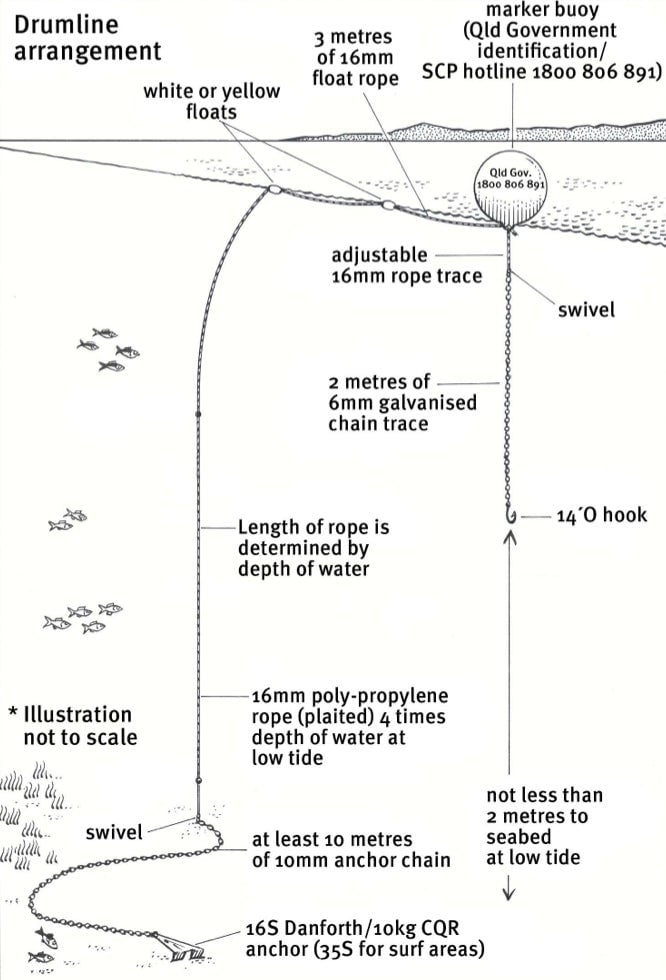
For reasons unclear, drumlines also seem lousy at catching bull sharks (pdf, p.8), a highly aggressive, pack-traveling species known to attack in water as shallow as 1 meter. Other research suggests nets are effective mainly at deterring only resident shark populations, whereas many big sharks, including tigers and great whites, are itinerant (pdf, p.27). That might explain why the two attacks at protected beaches in South Africa’s KwaZulu-Natal from 1980 to 2009 were great whites. Meanwhile, others fear that drumline bait actually attracts sharks to areas where humans are.
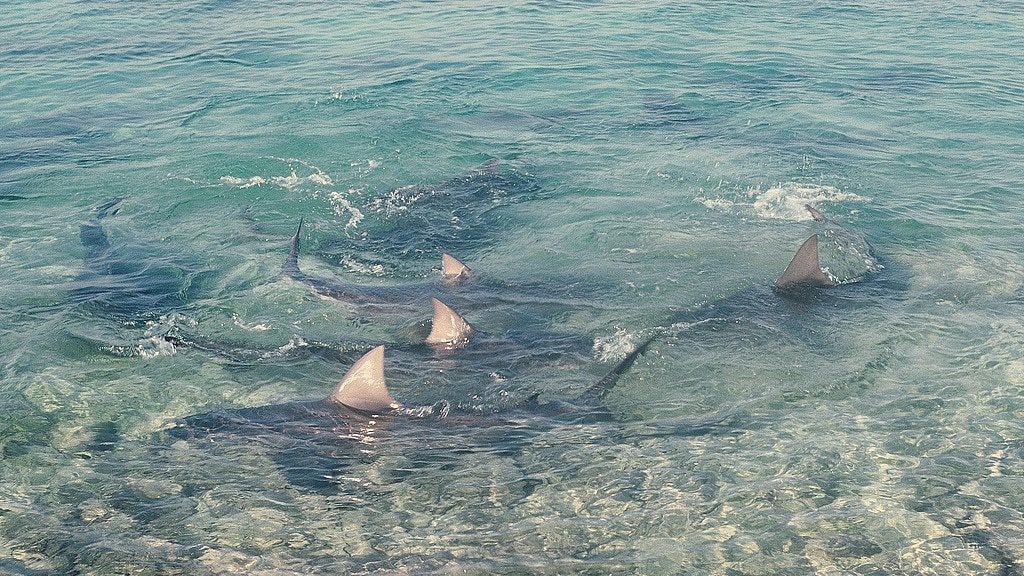
It’s possible that, despite their deficiencies, nets and drumlines still kill sharks that would otherwise have mauled swimmers. But it’s hard to know; giant, terrifying sharks are clearly swimming past all of these traps set for them and cruising beneath humans all the time, with the shark control programs none the wiser.
That could mean people aren’t getting attacked all the time not because of the traps, but because sharks simply don’t attack people very often. Though many attacks occur when the animal mistakes a human for a seal or another food source, little beyond that is understood. But in the 217 years from 1791 to March 2009, NSW saw only 222 unprovoked shark attacks, 70 of which were fatal (and many of those happened before the advent of ambulances or emergency medicine). While 1,249 Australians accidentally drowned (pdf, p.41) to death from 1998 to 2002, there were only 7 shark attack fatalities during that time. The odds of being knocked off by something as unusual as lightning or a bee sting is much higher:
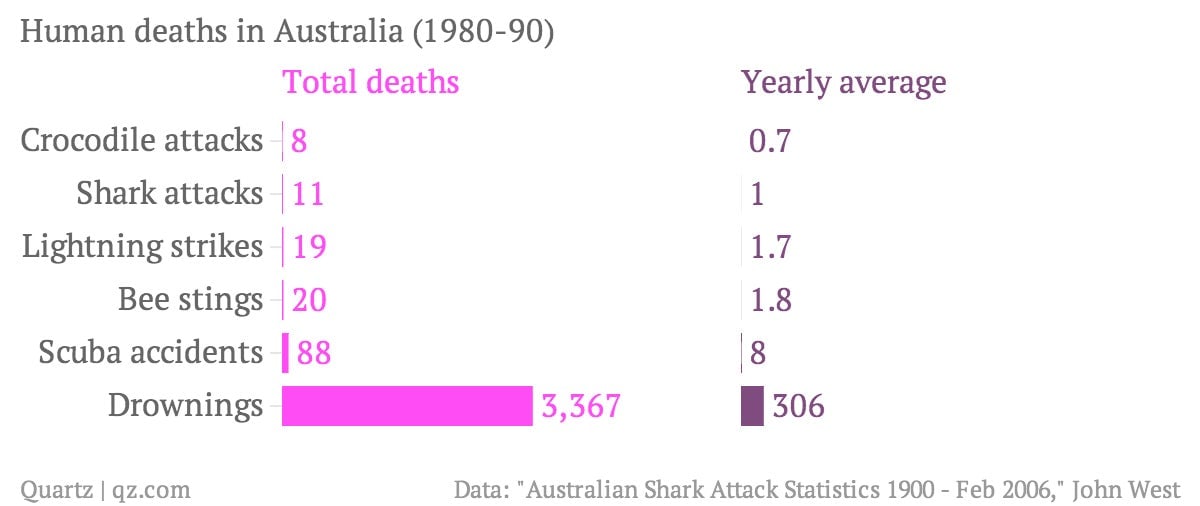
And yet the public isn’t baying for more lifeguards, or for a bee cull. It’s hard to think of examples of anything else that hurts so few people causing as much hysteria as shark attacks do.

The horrors of false security
From a certain angle, this clinical weighing of policy and statistics seems ghastly. Even a single fatal shark attack means that someone suffered unimaginable physical and mental anguish. Yet one of the most notorious recent examples of such a death highlights not the successes of the shark control program, but its failures.
In 2006, a pack of bull sharks attacked Sarah Whiley while the 21-year-old swam with friends from her church group in the murky late-afternoon waters off a sleepy Queensland beach town called Amity Point. No aerial patrol was available the day of the attack. Late afternoon is a notoriously dangerous time to swim, particularly given that fishermen were using live bait nearby and that the previous night’s storms had clouded the water. And even though locals generally refuse to swim in the area because they know it’s “teeming with sharks,” as The Age reported, there were no signs alerting swimmers to the presence of sharks.
No signs, no patrol, no warnings. But Amity Point did have one thing: drumlines. (The local tides and water depth in that particular area are too strong to permit nets.) The local community pushed to be part of Queensland’s drumline pilot project as a way of attracting visitors, as The Age reported, although some locals believed the baited drumlines attracted the sharks that killed Whiley to the area. A later government review questioned whether the area should have been protected in the first place, given the “large population of transient sharks in the area that would not be fished down” (pdf, p.28) and an abundance of food sources that “outclassed” the bait.
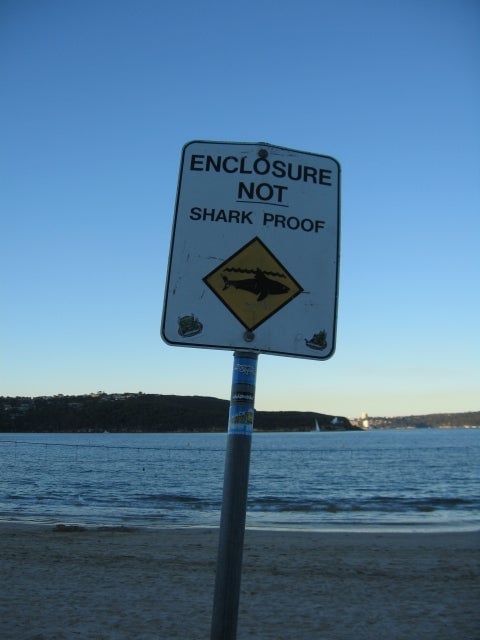
Sarah Whiley clearly had no idea of the acute danger of swimming when and where she did—quite to the contrary. The circumstances surrounding her death hint that shark control programs that emphasize capture can inadvertently create more danger, by lulling beachgoers into a false sense of safety.
It’s a phenomenon that policy makers worry about. ”It is difficult to determine if the nets actually prevent attacks, however they do provide a perception of security for beach users,” said a 2006 report prepared for Dunedin, a city in New Zealand that scrapped its shark net program in 2011.
The Australian government echoed these concerns (pdf, p.40) in a recent report on protecting its great white population. ”Balancing perceptions of public safety (and subsequent pressure on governments to ‘act’ after incidents of shark attack) with conservation remains a significant issue with respect to possible actions taken that can increase threats to the species,” said the report. “Public education and demystifying white sharks in the public domain remains a priority.”
Catch and release in KwaZulu-Natal
That means helping people understand the animals that surround them is easily as crucial to their safety as focusing on ways to kill sharks. One of the huge problems, though, is that even scientists have only the faintest understanding of shark habits, including what makes them attack. The most lethal ones, like the great white and bull sharks, also tend to be the most enigmatic.
Some programs have begun trying to fix that. In the 1980s, KwaZulu-Natal started releasing animals caught in nets and drumlines (the 40% or so that manage to survive, at least), including large sharks, tagging them for research purposes. The program employs three biologists who analyze the data to understand how well they work and their impact on shark populations. In 1999, KwaZulu-Natal began reducing the number of nets used, followed by a shift from nets to drumlines.
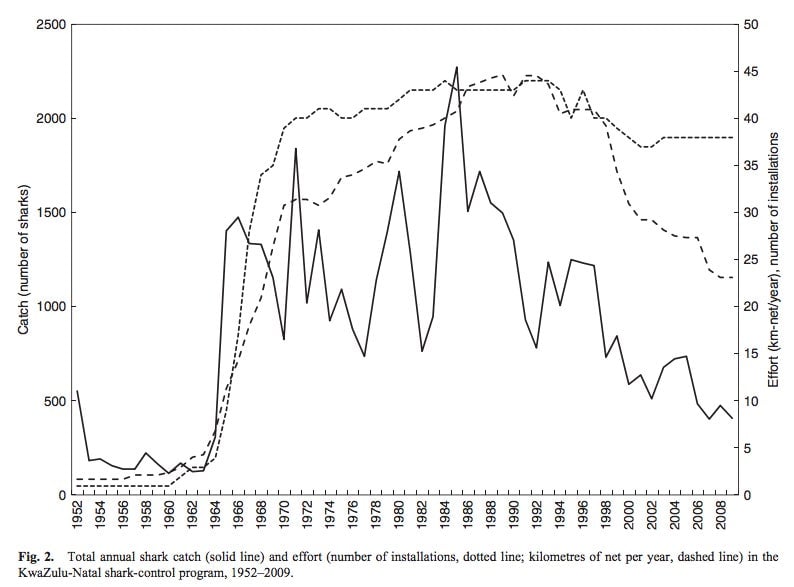
The KwaZulu-Natal team also focuses heavily on research. Its Shark Spotters program has made strides using sighting data to predict the behavior of great whites (hint: they like warmer water and less moonlight). The ultimate goal is to help beachgoers learn what conditions pose a greater risk of encountering sharks.
All this is expensive; in 1997, the last time data were available, the program cost $3.6 million a year (pdf, p.8), and it’s undoubtedly gone up since. But the approach seems to be working. The KwaZulu-Natal program—which, crucially, includes active patrols and alert systems—has “undeniably reduced the risk,” Alison Kock, a marine biologist who coordinates Shark Spotters, told Nature. Compared with five fatal attacks at unprotected beaches nearby, the region saw only one fatal shark attack (pdf, p.7) between 1990 and 1998.
A big reason KwaZulu-Natal did this was to reduce the number of turtles, rays, smaller sharks and other creatures—many of them endangered—that get caught in the anti-shark nets.
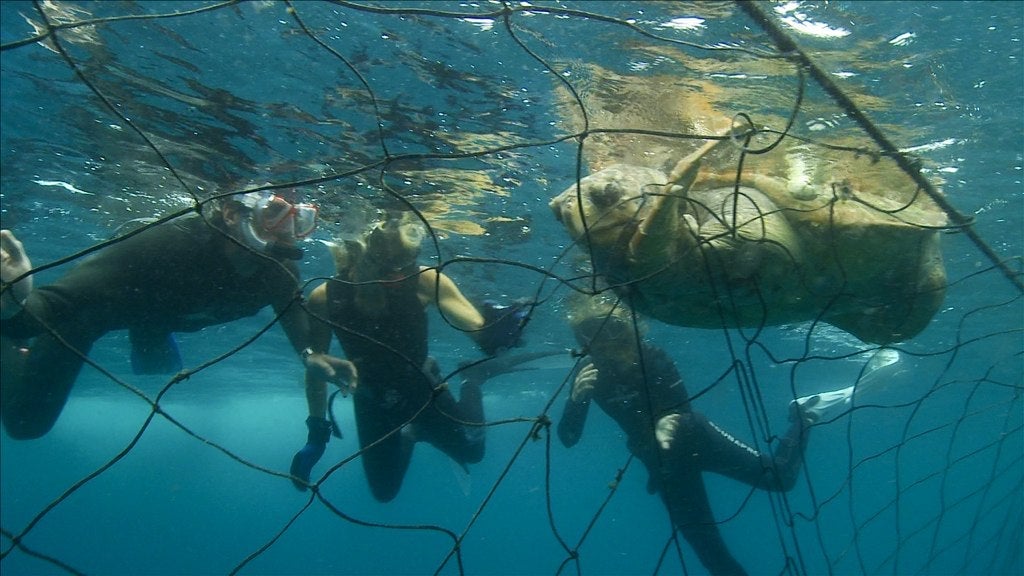
But another reason is that nets and drumlines aren’t by any means the only threats to sharks. Not only are they frequently killed by fishermen trawling for other catches, but they’re also a food source in some areas. On top of that, they’re commonly harvested for their fins, which are the centerpiece in a luxury soup throughout in Asia. Fins of tigers and great whites can fetch as much as $500 per pound ($227 per kilogram). Thanks to those factors, international regulators currently classify great whites as “vulnerable,” one step away from “endangered.”
Plus, the vast majority of sharks caught by nets and drumlines are small ones. In Queensland, for instance, more than half the sharks caught are smaller than two meters—meaning that they’re almost always harmless. In New South Wales, just 4% of animals caught from 1990 to 2008 were “target” sharks. Species like scalloped hammerheads and grew nurse sharks, both of which are frequently killed in nets and drumlines, are endangered. And this isn’t bad just for the smaller sharks, but also for commercial fishermen who rely on them for a living.
Protecting a killer?
Some argue that protecting great whites has increased their numbers. But as the New South Wales government points out, the frequency of shark bites has been growing much more slowly (pdf, p.28) than the human population has since 1900. This, along with the decrease in catches in the nets over decades, suggests there are simply fewer sharks in the waters than there were 100 years ago, it concluded.
But if shark populations are dwindling, why have places like Western Australia been seeing more attacks? The likeliest reason is that there are simply more people entering the water.
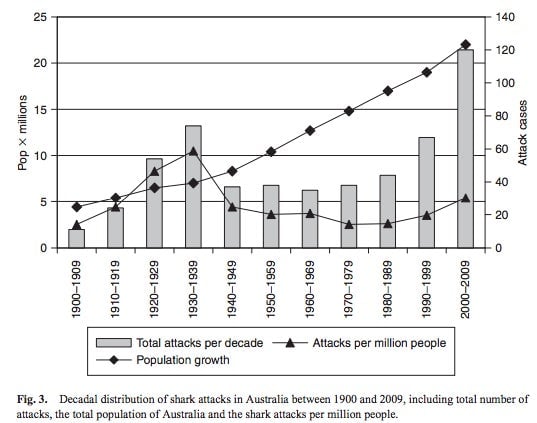
It’s true that “attacks per million people” are going up a little too. But that’s probably because, thanks to the growing popularity and sophistication of various watersports, humans are increasingly entering areas sharks inhabit—waters beyond the surf zone, reefs more than 30 feet deep. Data on Australia’s shark attacks seem to reflect that:
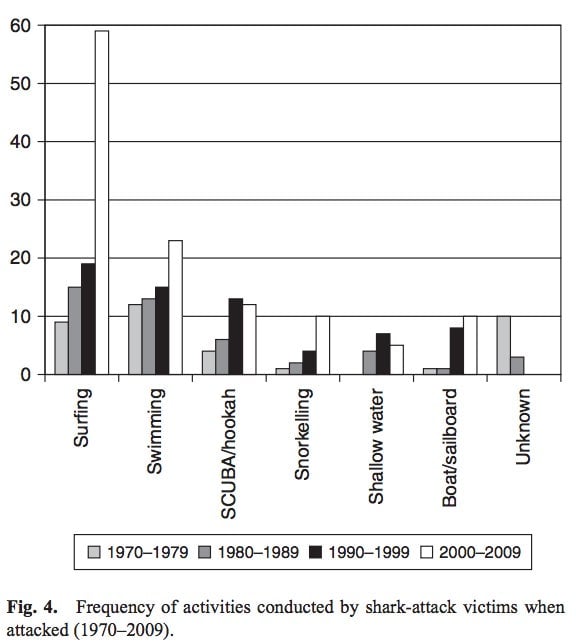
Of course, many of these surfers, divers and swimmers are conscientious, respectful of nature, and aware of the risks they face when they go for a dip. But many are not, as even one of the most aggressive shark-controlling governments admits. Despite its efforts “to modify behavior to minimize the risk of shark attack,” lamented the Queensland government, “bather behavior indicates they choose to ignore… basic safety principles” (pdf, p.20).
After seven deaths in three years, it’s understandable that the Western Australia government feels it must “solve the problem.” But which problem actually needs solving? An increase in great whites? That something’s causing them to roam closer to shore more frequently? That people are swimming at riskier times and places, increasing their still tiny odds of becoming shark food?
Its choice to go with drumlines and hunting patrols signals that Western Australia believes the problem is an increase in the number of deadly sharks. The grim irony is that, by suggesting to its beachgoers that it has the “problem” in hand, the government risks encouraging people to swim with even less caution. If that ends up happening, it will catch boatloads of three-meter sharks and still end up with human blood—to say nothing of shark, turtle, and other kinds of blood—on its hands.